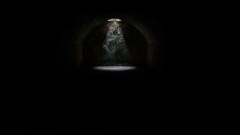Gospel writers Matthew and Mark seem to be chronicling the same event in Jesus’ life when they tell the story of him cursing the fig tree. However, their accounts appear to differ when it comes to their description of when the tree withered.
Matthew 21:19 – And seeing a fig tree by the wayside, he went to it and found nothing on it but only leaves. And he said to it, “May no fruit ever come from you again!” And the fig tree withered at once.
Mark 11:14, 20 – And he said to it, “May no one ever eat fruit from you again.” And his disciples heard it. … As they passed by in the morning, they saw the fig tree withered away to its roots.
In Matthew’s account, it sounds as if the tree withers just after Jesus curses it, while Mark suggests that it wasn’t until the next morning that the withering was apparent. Are these writers telling two separate stories? Is it the same story but one of them get the facts wrong? Or is there another way to understand the difference?
The ESV Study Bible offers a helpful explanation. It says that Mark treats the account chronologically, which is why he tells it in two parts (11:12-14 and 11:20-25), while Matthew is more interested in the lesson behind it.
Matthew discusses the cursing of the fig tree and the disciples’ reaction together, treating the events topically just as he did the triumphal entry and the cleansing of the temple (see note on v. 12). Mark gives the probable chronological order, while Matthew gives a literary compression of the account. Thus the tree was cursed most likely on Monday morning on the way into the city, and on Tuesday morning the disciples react to the withering on their way back to Jerusalem (cf. Mark 11:12–14, 20–26).
Apparently Matthew intended for his term parachrema (“at once”) to indicate a short though non-specific amount of time after the cursing, rather than an immediate occurrence.
(I have previously looked at a few other supposed contradictions in the Bible: that pesky rooster, who incited David? and are we justified by faith or by works?)










